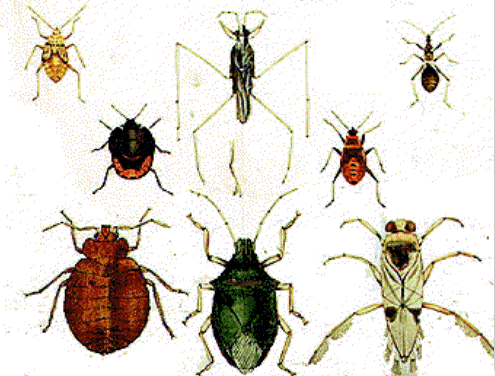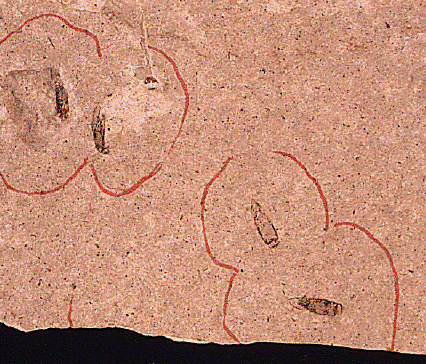Hemiptera and Homoptera
True bugs


Most people tend to call anything with lots of legs a "bug." However, to an entomologist, a "bug" is one of the 35,000 or so species of the order Hemiptera. Hemiptera means "half wing" and refers to the fact that part of the first pair of wings is toughened and hard, while the rest of the first pair and the second pair are membranous. Hemipterans also have modified piercing and sucking mouthparts; some suck plant juices and are plant pests, while others can bite painfully.
A possibly paraphyletic group of insects known as the Homoptera is sometimes included within the Hemiptera, even though they lack the toughened areas on the first pair of wings. Some entomologists group both Hemiptera and Homoptera within the group Heteroptera; others use the name Heteroptera for what we have called the Hemiptera and use Hemiptera for the Heteroptera. Confused? So are we. Anyway, the Homoptera have the dubious distinction of being probably the most destructive insects of all. They include aphids, leafhoppers, cicadas, and scale insects: 45,000 species in all.

Both Hemiptera and Heteroptera go back to the Permian, and are fairly well-known as fossils. The picture at the top of the page depicts a group of aquatic hemipterans, i.e. water bugs, from the Oligocene-age Florissant Shale of Colorado.
The drawing of assorted living hemipterans has been graciously provided by the University of Illinois Department of Entomology; thanks to David Lampe for making them available to us.
For more detailed information on the phylogeny of the Hemiptera, we suggest the Hemiptera page from the Tree of Life project at the University of Arizona.

Carpenter, F. M. 1992. Treatise on Invertebrate Paleontology. Part R. Arthropoda 4, Volume 3: Superclass Hexapoda. Geological Society of America and University of Kansas, Boulder, Colorado and Lawrence, Kansas.

